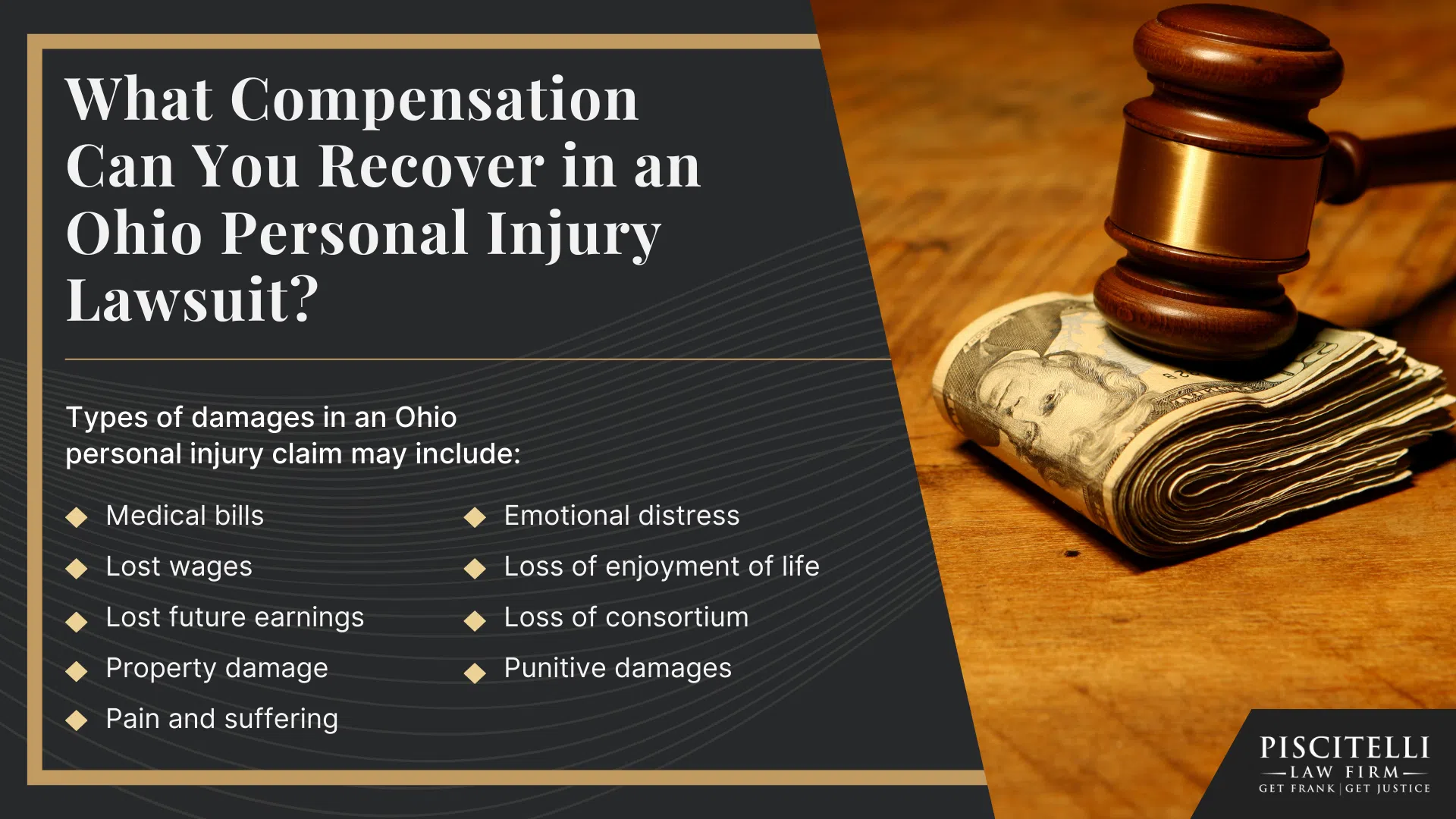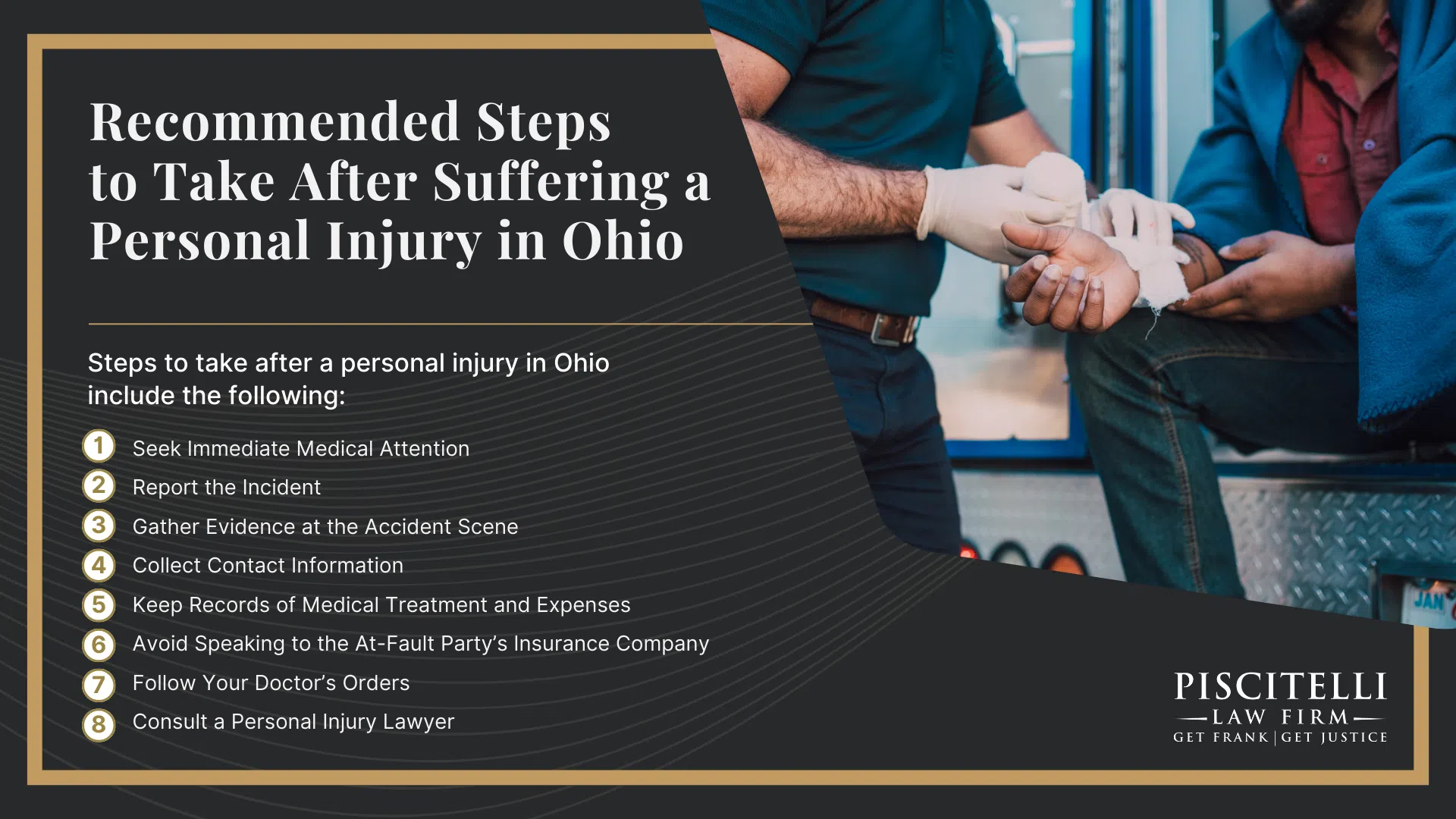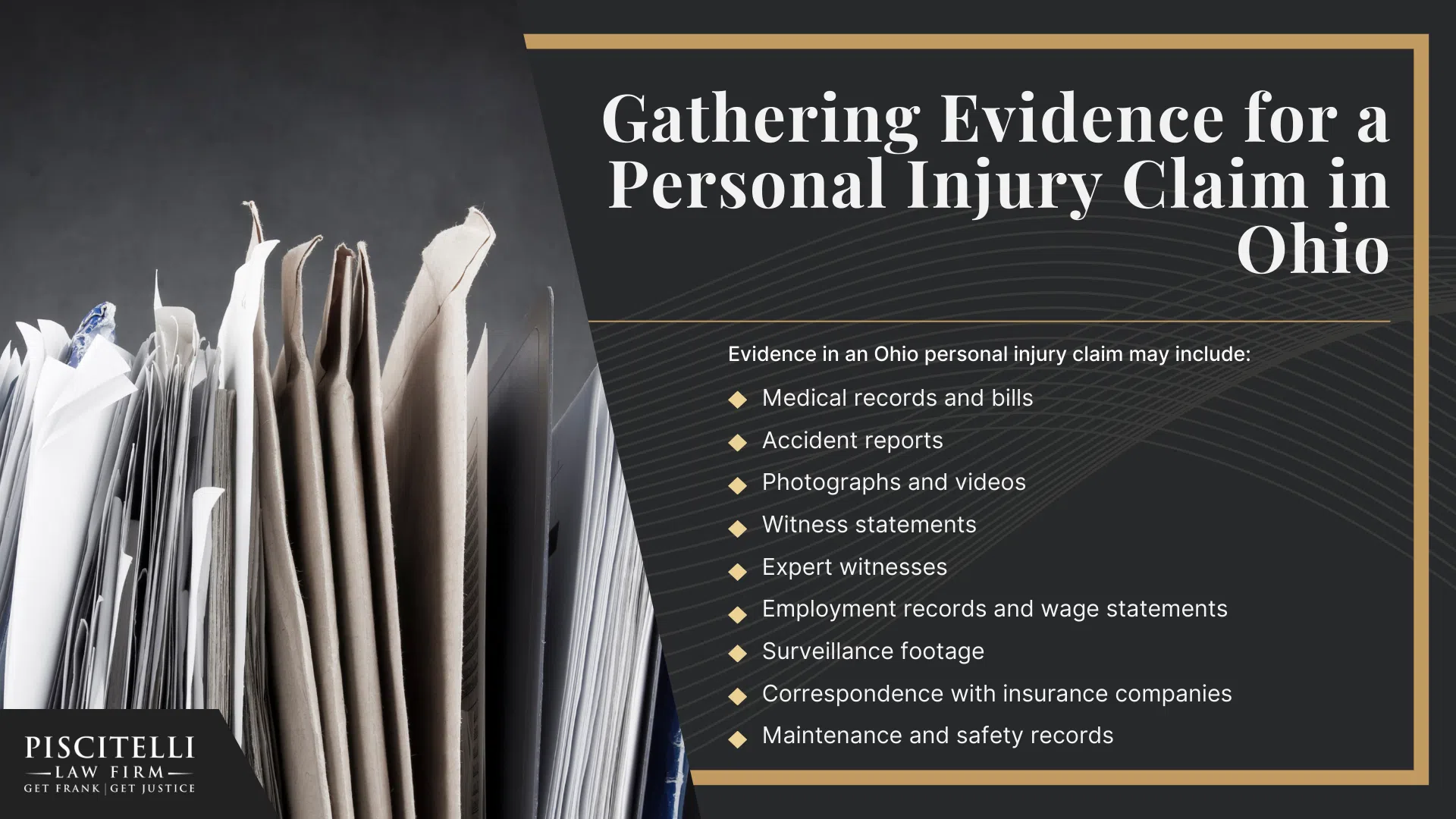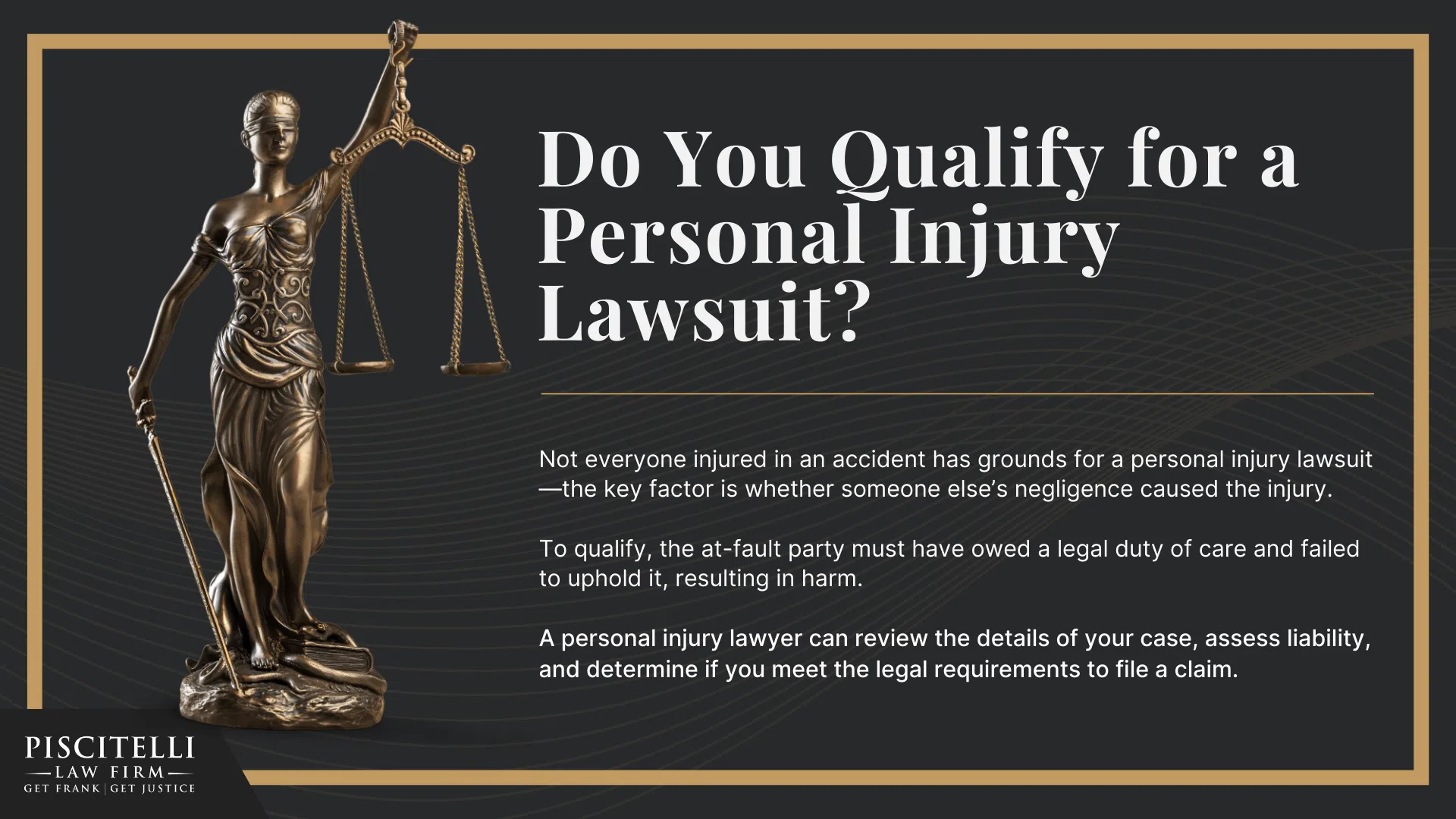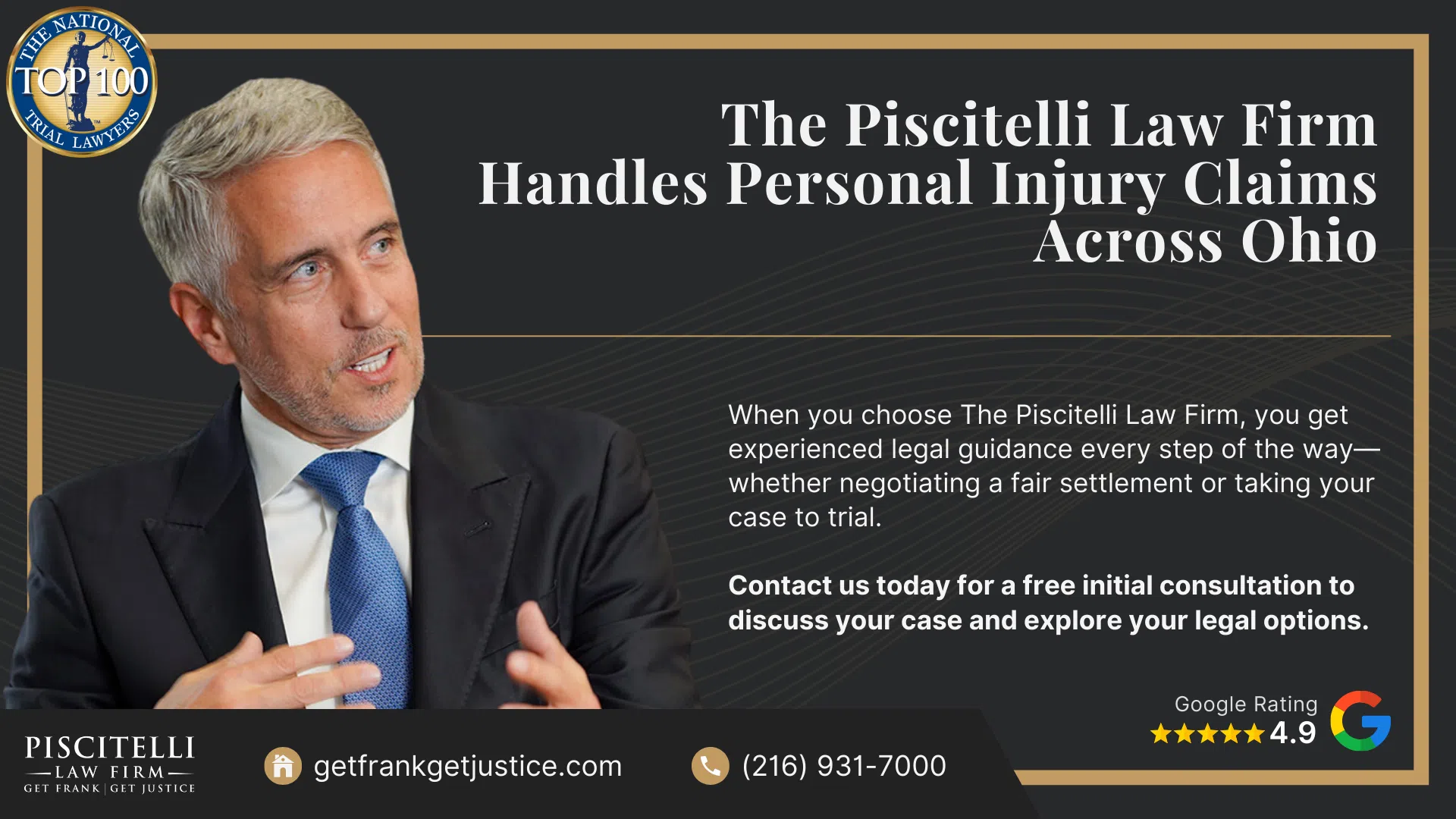In Ohio, personal injury lawsuits arise when an individual is harmed due to someone else’s negligence, whether in a car accident, workplace incident, medical malpractice case, or another preventable event.
State law allows injury victims to seek compensation for medical expenses, lost wages, pain and suffering, and other damages, but strict legal deadlines apply.
Most personal injury lawsuits in Ohio must be filed within two years from the date of injury, as outlined in Ohio Revised Code § 2305.10.
However, exceptions exist, such as cases involving toxic exposure, delayed diagnoses, or injuries to minors, which may allow for an extended filing period.
The legal process follows specific steps, starting with gathering evidence and contacting a personal injury lawyer who can assess the claim.
While many cases settle out of court, those that proceed to trial require strong evidence, expert testimony, and a thorough understanding of Ohio personal injury law.
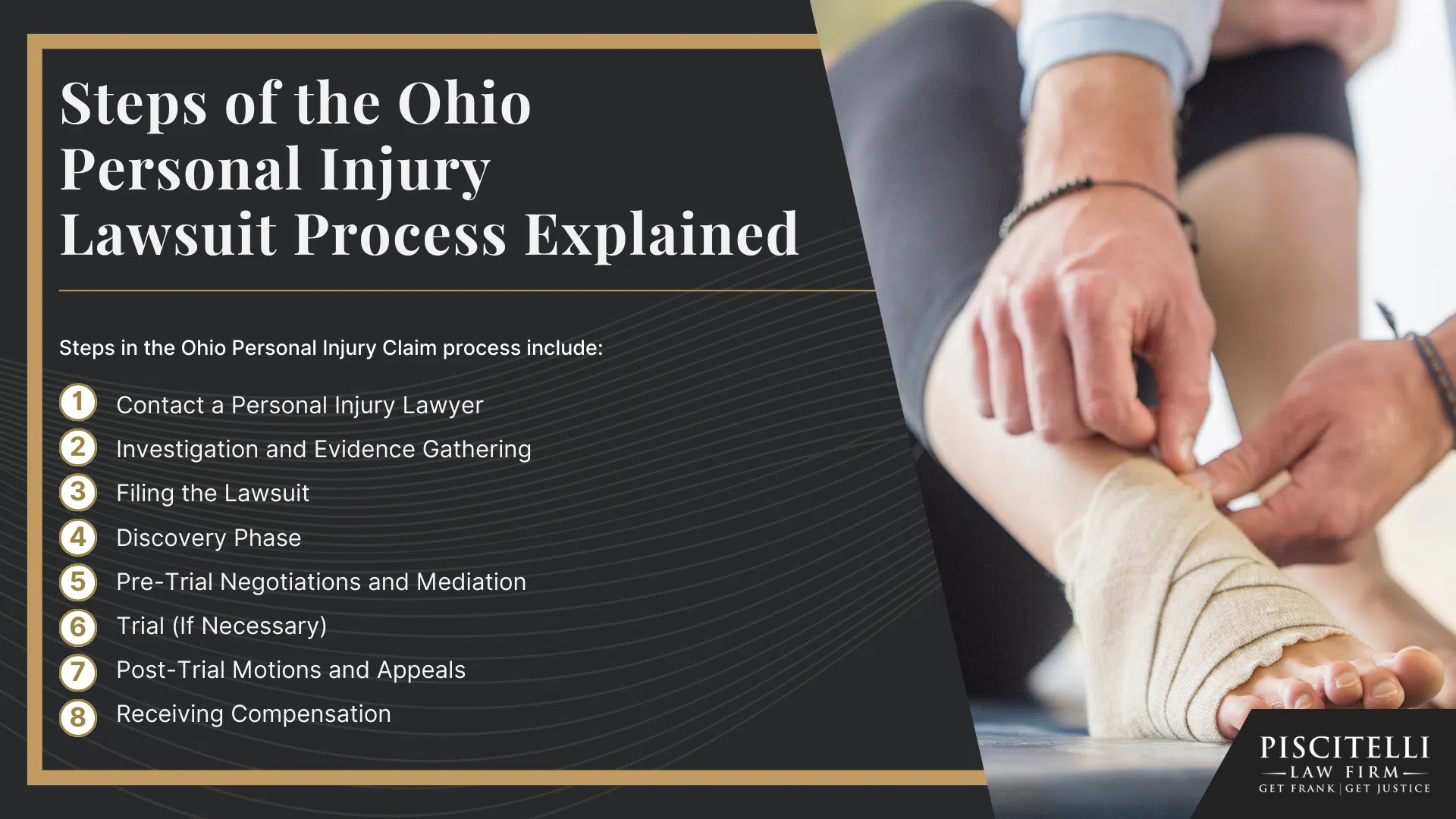
Steps in the Ohio Personal Injury Claim process include:
- Contact a Personal Injury Lawyer – An attorney evaluates the case, explains legal options, and determines whether a lawsuit is necessary.
- Investigation and Evidence Gathering – Medical records, accident reports, witness statements, and expert opinions are collected to build a strong claim.
- Filing the Lawsuit – If a fair settlement isn’t reached, the attorney files a formal complaint in the appropriate Ohio court before the statute of limitations expires.
- Discovery Phase – Both sides exchange evidence, take depositions, and gather testimony to prepare for negotiations or trial.
- Pre-Trial Negotiations and Mediation – Attorneys work to settle the case outside of court through negotiation or mediation, which can result in a faster resolution.
- Trial (If Necessary) – If a settlement is not reached, the case goes to trial, where a judge or jury determines fault and awards damages.
- Post-Trial Motions and Appeals – If either party disputes the verdict, post-trial motions or appeals may be filed, potentially extending the case.
- Receiving Compensation – If a verdict or settlement is reached, compensation is distributed, covering economic and non-economic damages awarded in the case.
How Long Does a Personal Injury Lawsuit Take in Ohio?
The length of a personal injury lawsuit in Ohio depends on several factors, including the complexity of the legal claim, the strength of the evidence, and whether the case settles or goes to trial.
Some cases resolve in a few months, while others take several years, particularly if litigation is required.
Most personal injury claims settle before trial, often within six months to a year, depending on the willingness of the insurance company to negotiate.
However, if the case proceeds to court, the discovery phase, pre-trial motions, and trial scheduling can extend the process significantly.
Ohio courts prioritize settlements, but contested claims—especially those involving serious injuries, disputed liability, or complex medical evidence—may take longer.
Cases involving government entities, multiple defendants, or appeals can further prolong the timeline.
An experienced personal injury attorney helps move the case forward efficiently while ensuring the injured party does not accept an unfairly low settlement.
Will I Have to Go to Court for My Personal Injury Lawsuit?
Most claims settle before reaching a personal injury trial, but some cases require litigation if the other party or their insurance provider refuses to offer an adequate settlement.
The process begins with an initial demand, where your attorney sends a demand letter outlining the settlement demand and evidence supporting your claim.
If the negotiation process fails, the case moves into the trial phase, starting with jury selection and pre-trial procedures like written discovery and depositions.
During trial, attorneys present opening statements, followed by evidence, witness testimony, and cross-examination of experts and the other party.
After all evidence is presented, attorneys deliver closing arguments, summarizing their case before the jury deliberates.
Jury deliberation determines the final verdict, deciding liability and compensation.
While trials can be lengthy and complex, an attorney’s professional opinion can help decide whether pursuing litigation is in your best interest.
Instances in which a personal injury case may go to trial include:
- The insurance provider denies liability or disputes the claim.
- The other party refuses to negotiate or make a reasonable settlement offer.
- The case involves severe injuries or long-term disabilities, making valuation complex.
- The parties cannot agree on the amount of an adequate settlement during the negotiation process.
- There are conflicting witness testimonies or disputes over how the accident occurred.
- The court determines that written discovery and depositions do not resolve legal issues.
- The case involves punitive damages due to gross negligence or intentional misconduct.


